11 — 13.05.2016
Alessandro Sciarroni San Benedetto del Tronto
Aurora
dance
⧖ 1h | € 16 / € 13 | Meet the artists after the performance on 12/05
Italian dancer and choreographer Alessandro Sciarroni has created a stir the past few years with extraordinarily physical pieces that crisscross dance, performance, and folklore. Aurora is the last part of a trilogy that aims to intensify the vulnerability and resilience of bodies. After the Tyrolean folk dance in Folk-s and the juggling in Untitled, Sciarroni is now focusing on a somewhat peculiar sport. Goalball is a Paralympic team sport for the blind and visually impaired whereby the players have only their hearing and touch to rely on. The winning team is the one that sends the jingling ball into the opponent’s goal the most times. Sciarroni introduces the game of goalball as a ready-made. The audience gets to see a real match, but the game-master forces things and thereby disrupts, little by little, the perception of the actors and the audience. By intervening in the sound and lighting, he makes the playing field into a dramaturgical field of tension. Space blurs and time slows. Sciarroni sheds new light on how we look and what we see.
Aurora, a film-diary of the creation process directed by Cosimo Terlizzi, will be screened after each performance (duration: 60 min.).
Interview with Alessandro Sciarroni about Aurora
Why is the piece called Aurora?
Many goalball players suffer from a disease called retinitis pigmentosa. It’s a genetic disease of the eye where, as the disease progresses, your field of vision gets smaller and smaller until you lose your central vision. I chose the title Aurora, which means dawn, because I thought of the moment when light changes. The show starts in bright light and then over a period of around twenty minutes the light gradually dims until you can barely see anything at all. The performers and audience experience the same conditions: all that’s left is the sound of the ball. After this eclipse, I imagine a new dawn. The light returns and the goalball players stop just being players. I start working with their humanity, not just with the rules of the game.
What do you like so much about moving things around on stage that can barely be seen or can’t be seen at all?
The idea for this third part came to me when I was working on the second one about juggling. I didn’t really like the circus when I was a child and for a long time I was suspicious of this kind of entertainment. And then, one day, I was watching two jugglers pass to one another at a cabaret and I realised that jugglers are mad because they’re fighting a losing battle with gravity. A juggler can never win, what they’re juggling has to drop at some point, and I understood that juggling was perhaps closer to meditation than entertainment. I wanted to put these jugglers on stage to reveal the meaning behind what they do. It’s the same with sport. I was never particularly interested in sport. My father tells me that when I was seven or eight, he took me to see a football match but all I did was go down to the bottom of the stand and turn round to watch the crowd, not the match. I was already looking for a meaning behind it. Why are people so enamoured by sport? Why are they so keen on it? So there’s no doubt that I put things on stage because it allows them to be isolated from their environment so that I can have a better understanding of their meaning.
When you take on these unfamiliar practices, do you respect their gestures and rules?
I try to be very orthodox. In one sense, you can talk about “ready-made”. Everything already exists. I’m only composing with what already exists and arranging it, but I’m not creating anything. When I wanted to create Folk-s, I asked people from the Italian Tyrol to teach us their dance, but they wouldn’t do it. We learnt it on our own and then went to dance in front of them, without music, and they saw that we’d understood the spirit of it: we’d seen that unison and rhythm were the most important elements. And after that they really did want to teach us how they did it. It’s the same with Aurora: I’d like it to be a real match with half-times, a change of ends etc. and to play with this reality.
So in that case you can’t really write down the movements…
But I don’t really ever write down movements in detail. I work more from motifs, from independent patterns that then have to be arranged. In Folk-s, we didn’t know how long the piece was going to last because everything depended on when the performers got tired and left the stage or when the audience left the theatre. The dancers have motifs that they can arrange afterwards, on stage, as they wish. I’m using the same logic in Aurora.
Are there principles that guide these patterns?
One very important thing for me is that the choreography shouldn’t be perfect. As soon as it’s too beautiful, too mastered, too spectacular, I stop. I’m looking for imperfections, hitches, false unisons. But even then, you also have to be able to feel the connection, the link between it all, otherwise it’s chaos and chaos is annoying. We try to reveal the presence of an outline or a design without showing it. It’s about making it felt, hinting at it.
Why this slight aversion to perfection?
Because if you don’t see the effort or the work in it, if you just see perfection, then it’s failed, it’s annoying. Whereas if you see the work, you can share in the process and I believe that affects the audience and creates empathy.
In Folk-s, the dancers were blindfolded at times. In Aurora, the performers are blind. Blindness in particular seems to be something that interests you.
That’s true. Even in Untitled, the jugglers occasionally close their eyes. I think that what I want to say is that rhythm is more important than vision. We’re constructing the dance by looking for rhythm, not by seeking to create images. When I started working with blind people, I realised that when they were close to the stage, they were able to hear the bodies’ movements and understand the piece. So the meaning is conveyed through something other than vision and it’s really the meaning that interests me.
Goalball is a tiring sport. In Folk-s, the performers perspired a lot. Your shows look exhausting for the performers. Is exhaustion something you’re looking for?
Not exhaustion exactly, more resistance, even if I don’t really like the word. I don’t like to see people suffering on stage. There was a time when I watched performers from the 1970s a lot. I was a big fan of violence and blood and the artists’ physical commitment. I was impressed by their extreme commitment. But I wouldn’t want to see that now. I don’t think it’s something our world needs. What I’m trying to show is more the effort, and the beauty in this effort. Effort for me is do with how long it takes, with survival. If someone carries on dancing despite their fatigue, despite everything, then we continue to be alive.
Interview by Stéphane Bouquet for the Festival d’Automne à Paris and the Théâtre de la Cité internationale
Translation: Claire Tarring
Invention
Alessandro Sciarroni
With
Alexandre Almeida, Emmanuel Coutris, Charlotte Hartz, Matej Ledinek, Damien Modolo, Emanuele Nicolò, Matteo Ramponi, Marcel van Beijnen
Visual documentation & dramaturgical collaboration
Cosimo Terlizzi
Lighting
Valeria Foti, Cosimo Maggini, Alessandro Sciarroni
Soundscape
Pablo Esbert Lilienfeld
Dramaturgical consultancy & casting
Sergio Lo Gatto
Artistic collaborations
Francesca Foscarini, Francesca Grilli, Matteo Maffesanti, Eric Minh Cuong Castaing, Cosimo Terlizzi
Styling
Ettore Lombardi
Development, promotion & advice
Lisa Gilardino
Administration & executive production
Chiara Fava
Casting, assistant & research
Damien Modolo
Press
Beatrice Giongo
Technical & sport consultancy
Ettore Armani, Angelo De Meo, Aurora Zanolin
Presentation
Kunstenfestivaldesarts, Halles de Schaerbeek
Production
Marche Teatro – Teatro di Rilevante Interesse Culturale (Ancona)
With the support of
Fondation d’entreprise Hermès in the framework of the programme New Settings
In co-production with
Kunstenfestivaldesarts, Les Halles de Schaerbeek, Mercat de les Flors (Barcelona), Torinodanza Festival (Turin), Théâtre National de Bretagne (Rennes)
And
Comune di Bassano del Grappa – CSC Centro per la scena contemporanea, Centrale Fies (Dro), SZENE Salzburg in the framework of APAP Advancing Performing Arts Project, Espace Malraux –Scène Nationale de Chambéry et de la Savoie, Kunstencentrum Vooruit (Ghent), Tanzhaus NRW (Düsseldorf)
With the support of
CND – Centre National de la Danse (Pantin), Graner Centre de Creació (Barcelona), Dansehallerne (Copenhagen)
Executive production
Corpoceleste _C.C.00#
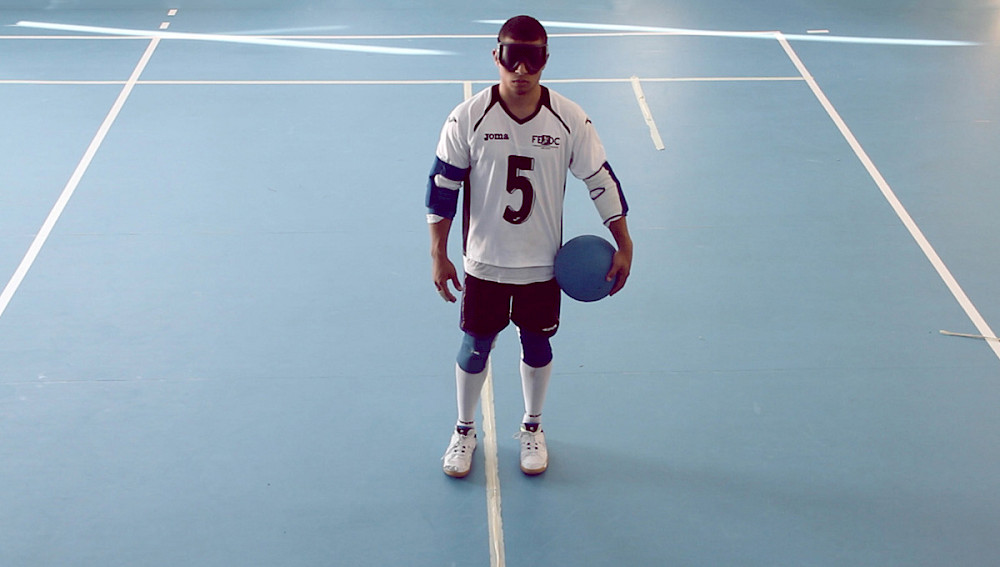
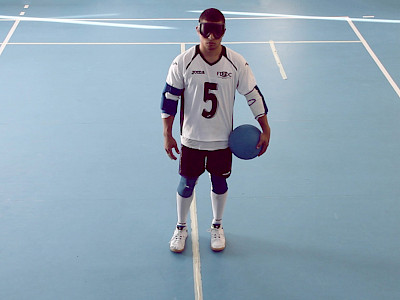
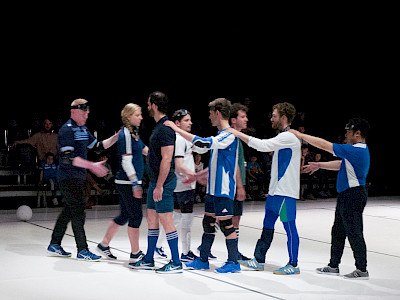
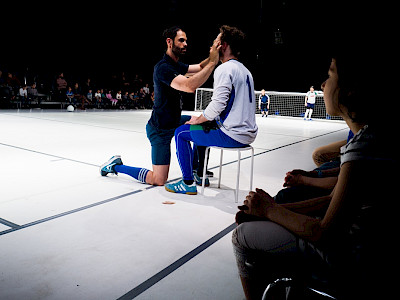
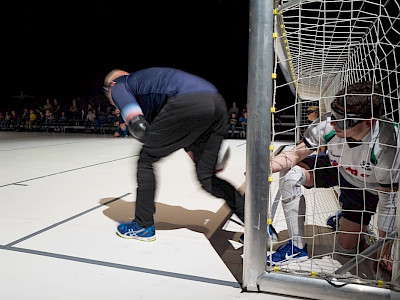

Notice: Undefined index: v in /home/kfda/public_html/site/assets/cache/FileCompiler/site/templates/inc/functions.inc on line 39

